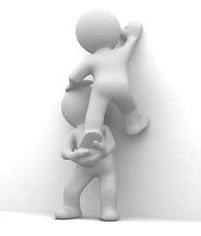TOOLBOX Theory / Teaching NotesA Brief Introduction to Coaching |
Turkish_
|
|
|
AN ALLIANCE
The purpose of coaching in any field of endeavour is to maximise the potential of the person being coached (Client). Classic Coaching is carried out on a one-to-one basis and the alliance between the coach and the client is an important part of ensuring that there is a successful outcome. THE PROCESS The coach and the client clarify where the client wants to go in their life/career Following a determination as to where the client is now in relation to what they wish to achieve, they then agree on a proposed course of action which involves setting goals and making commitments that should facilitate their achievement. Progress is monitored on an ongoing basis and corrective action is taken, as appropriate. A Structured Framework Coaching provides a structured framework with a likelihood of more positive outcomes. The chances of success are enhanced, because the involvement of the coach makes it more likely that the client will stick to their commitments. While one to one coaching is the ideal, we believe it is possible for someone to make significant changes in their lives, on their own, by using coaching principles. The purpose of self-coaching in any field of activity is to provide the user with a structured approach to achieving goals. Rather than having a general idea of where they want to get to, the user is encouraged to carry out a number of exercises which will enable them to reflect more deeply on what they wish to achieve and to select the issues .on which they wish to focus their attention Coaching and Therapy The purpose of therapy is to get you from dysfunctional to functional. The purpose of coaching is to get you from functional to exceptional. Because both coaching and therapy operate generally on a one-to-one basis and both are interested in the well-being of the client, there can be confusion as to what they are both about. A therapist is generally working with someone who is experiencing difficulties in their lives and maybe having difficulty coping. Often this involves exploring the clients past. A coach on the other hand, assumes that you are a fully functioning human being who by changing your perspectives or your behaviour could improve your performance in the future. So their focus is primarily on the here and now and the future Selecting Issues for Attention and Resolution These issues will most likely fall into the following categories:-
They can be identified in many different ways including following:-
They are then resolved again in many different ways including the following:-
Next Explore specific Coaching Tools. Link |
